Today, I have released a new paper about teachers hours of work, co-authored with Sam Sims and Becky Allen. This is part of a project, funded by the Nuffield Foundation, investigating the health and well-being of teachers in England.
This blogpost provides an overview of some of our key findings. A copy of the full paper is available here.
So, what have we learnt?
1. The total working hours of teachers in England has remained broadly unchanged over the last 25 years
The chart below uses data from the Labour Force Survey to estimate how the total average weekly working hours of full-time teachers has changed since 1992. The picture is broadly flat, with figures consistently hovering around an average of around 48 hours per week.
The current working hours of teachers in England therefore does not seem to be outside of its historic norms.
2. Secondary teachers spend as much time on marking, planning, administration and management as they do actually teaching
Full-time secondary teachers in England spend, on average, around 20.1 hours per week on administration, marking, lesson planning and management tasks. This is almost as much time as they spend actually teaching.
This serves an important reminder that teaching is only one part of teachers’ jobs.
3. Despite recent government efforts, there has been no meaningful reduction in the time secondary teachers spend upon non-teaching tasks
Over the last five years, the Department of Education has introduced a number of initiatives to try and reduce teacher workload – particularly time spent upon non-teaching tasks.
Yet, as the chart below illustrates, this has so far had no meaningful effect. Secondary teachers were spending just as long on non-teaching tasks in 2018 as they were in 2013.
4. Four-in-ten teachers usually work in the evening, while one-in-ten usually works at weekends
Data from the Labour Force Survey, presented below, suggests that around 40% of teachers in England usually work in the evening, while around 10% usually work at the weekend. This is not a new phenomenon – our results suggest it goes back at least to 2005 (when data collection for this information begun).
5. There is no such thing as an ‘quieter’ term
When starting this project, we thought we might find evidence of a summer-term lull, as the long, six-week holiday approaches – with ‘spikes’ at other points in the year seeing teachers work particularly long days.
To our surprise, this was not the case, as illustrated by the chart below. Average working hours were reported to be around the same level (on average) throughout the academic year. There was, however, some suggestion of a slight tail-off in the final week before school holidays.
6. Most teachers don’t report working in the school holidays – though a minority continue to put in long hours
Another finding that caught us by surprise was that most teachers did not report working during the school holidays. The median number of hours that teachers reported working was zero. (That is, if all teachers were lined up in order of hours work, the teacher in the middle would have worked zero hours during the holidays.) And, in fact, the vast majority reported working no hours.
But a small number of teachers continue to put in long hours even during school breaks. Around 10% of teachers report working between 12 and 30 hours in one or more of their half term breaks, with similar figures for the Christmas and Easter breaks.
Now, we need to treat this finding with some caution, as it conflicts with other data (and the experiences of many teachers). For instance, results from Teacher Tapp suggest that during half-terms around 60% of teachers plan lessons, around 30% mark pupils’ work, while around 10% ran exam revision sessions.
In my view, this issue of working during school holidays is a critical aspect of teachers’ working lives that we still know relatively little about.
7. It is hard for teachers to take a proper break during the school day
One of the datasets we use in our work are the time-use diaries. These allow us to examine the times that teachers work during a usual school day. This is illustrated in the chart below, which shows the percentage of teachers who said they were working at any given time.
It seems that many teachers take only a short break while they are in school. This is consistent with evidence from Teacher Tapp, which found that 68% of teachers read emails, 40% create resources and 55% tidy their classroom during their “breaks”.
In other words, many teachers continue to work in-between lessons, rather than being able to relax.
A sister research blogpost will be published tomorrow. Sign up to our mailing list now to receive it by email.

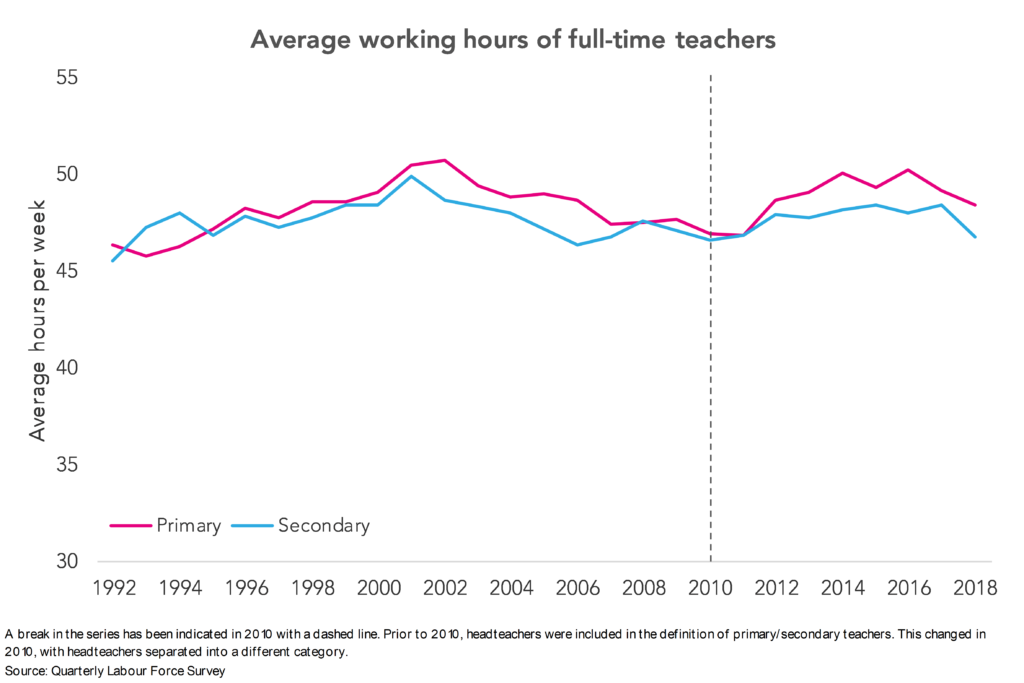

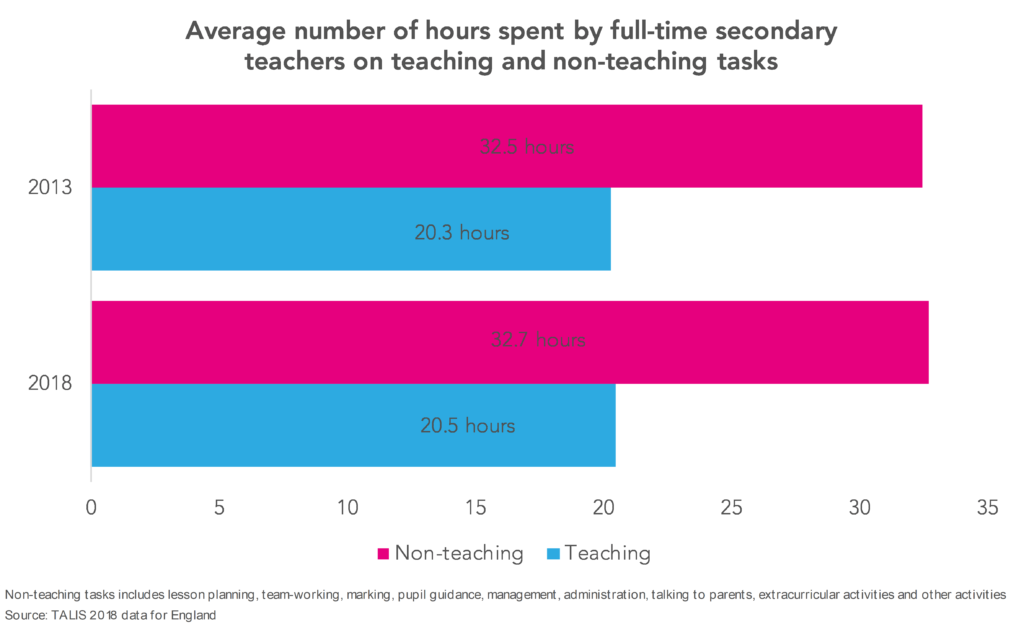
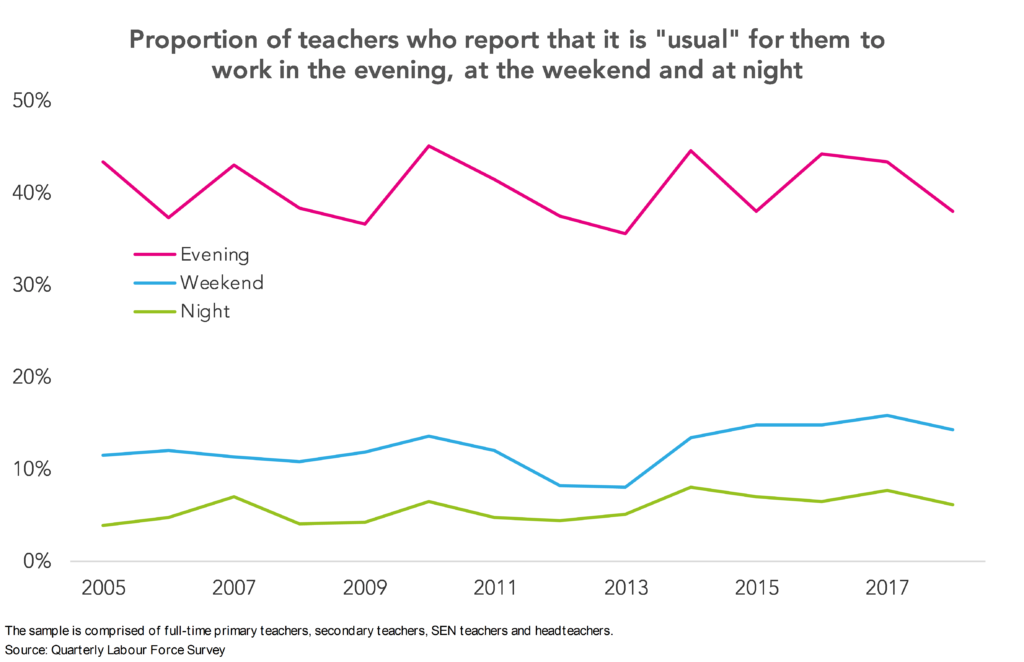



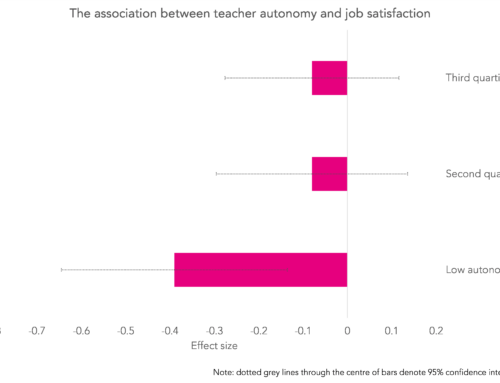


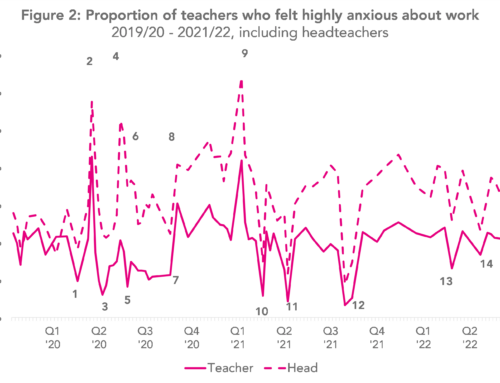
Statistics compiled on what teachers think is an acceptable work load are probably skewed by multiple choice questions that base have sections from 30-40hours and 40-50 hours, if slightly more choose 40-50 you end with a mean somewhere around 43h? Is the same true of how many hours people work surveys?
On work load – more tasks are added each year, but what is taken away? I would say teaching just fills every hour you allow it to, the job is never finished.
Thanks for your comment, Mark. The questions are not generally multiple choice, usually free-text.
I also appreciate the point you make about tasks just being added each year. And that it takes up all the time you are willing to allow it. Academia feels the same. And, of course, this means working hours is not the same as workload…